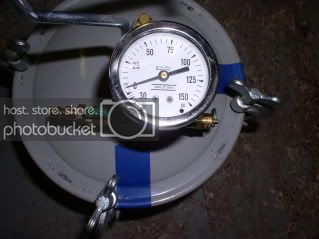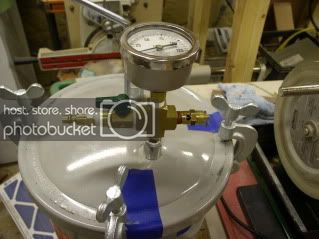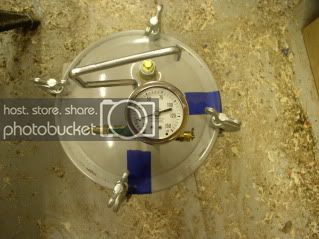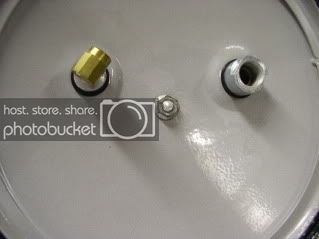thewishman
Member
Going to today's HF sale and buy the pressure pot. There are so many pressure pot set-up ideas posted here, is there a simple one that a non-mechanically inclined guy like me can do it?
Chris,
If a bonehead like myself can figure it out, surely you can, lol.
How true, how true!!!! :biggrin:






Like a previous poster, I eliminated the pressure relief valve altogether,
Fred,
This comment is not directed at you, but to the IAP community in general....
I think we should be very careful any time we recommend, suggest, imply or report that SAFETY devices be removed or disabled. Spinning carbide blades, electricity, pressure, and many other things can cause severe injury and DEATH.
We are all free to do what we want, and I admit I do some dumb stuff sometimes, but I try very carefully to never be in a position where my advise threatened others.
The relief valve on a pressure pot is there for a reason. If it causes problems, it should be replaced, not disabled.
Regards,
Tom






Much safer to disconnect the compressor from the pot, after all you only need the pressure on the cast for 20-30 minutes anyway, until it sets.
Once the air supply is removed there is als no way that the pressure can then inadvertently go up.
Actually, if there is a temperature rise, the pressure will go up as well.
If casting at 70 degrees in the morning, and the temp goes up to 95 ( as can happen, then there can be a dangerous increase in pressure. Also, if for some reason, the pot is in direct sunlight, and espaecially through a window, then the increase will be even more.
That is the best reason to put a good relief valve on the pot
Jerry
Actually, if there is a temperature rise, the pressure will go up as well.
If casting at 70 degrees in the morning, and the temp goes up to 95 ( as can happen, then there can be a dangerous increase in pressure. Also, if for some reason, the pot is in direct sunlight, and espaecially through a window, then the increase will be even more.
That is the best reason to put a good relief valve on the pot
Jerry
And dont forget that this is an EXOTHERMIC (releases heat) reaction that can also increase the pressures.
Tom
Fred,
This comment is not directed at you, but to the IAP community in general....
I think we should be very careful any time we recommend, suggest, imply or report that SAFETY devices be removed or disabled. Spinning carbide blades, electricity, pressure, and many other things can cause severe injury and DEATH.
We are all free to do what we want, and I admit I do some dumb stuff sometimes, but I try very carefully to never be in a position where my advise threatened others.
The relief valve on a pressure pot is there for a reason. If it causes problems, it should be replaced, not disabled.
Regards,
Tom
more ideas
would this pot work?
2-1/2 Gallon Pressure Paint Tank from hr?
http://www.harborfreight.com/cpi/ctaf/displayitem.taf?Itemnumber=66839
thanks
mbuckley52
Like a previous poster, I eliminated the pressure relief valve altogether, I also eliminated the regulator.
